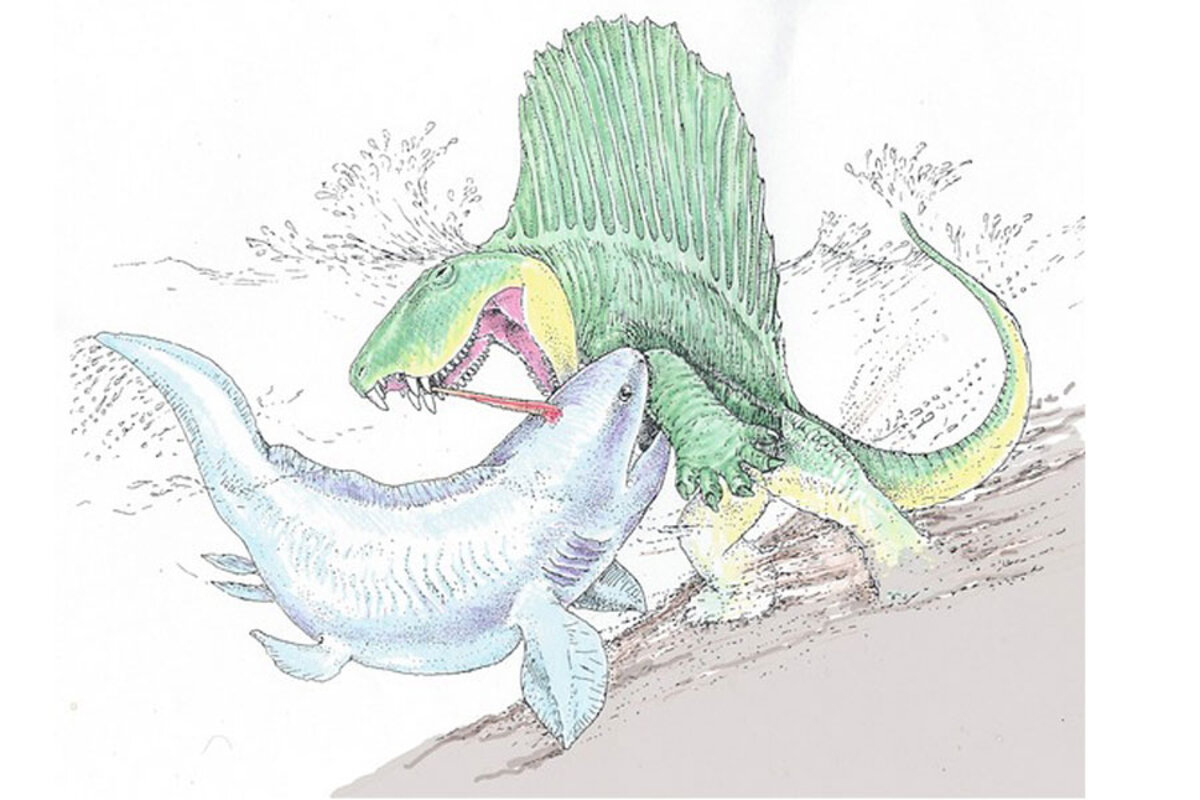Ancient mammal ancestor devoured sharks, say scientists
Loading...
| Vancouver
With fangs and the first sawlike teeth on Earth, the biggest predator in the swamps of the early Permian Period ate anything it wanted.
But when waddled on land 290 million years ago, there weren't enough tasty herbivores to go around, according to an idea proposed in the 1970s by famed paleontologist E. C. Olson. "There were too many meat eaters," said Robert Bakker, the curator of paleontology at the Houston Museum of Natural Science. "There was a meat deficit all over the world."
After 11 years of sifting through fossils in Baylor County, Texas, Bakker said he thinks he has proved Olson right, based on research presented Monday (Oct. 20) here at the Geological Society of America's annual meeting. []
During the early Permian, carnivores greatly outnumbered herbivores on land, so Dimetrodon filled its belly by hunting in shallow water. In the bone beds, Bakker and his collaborators uncovered 30 Dimetrodons and only two herbivores. But the fossil hunters also found masses of freshwater shark fossils intermingled with . Dimetrodon shed teeth throughout its life, and the lost crowns are like bullets at a crime scene, Bakker said. "This is CSI," Bakker told Live Science. "Sharks were eaten by Dimetrodon in great numbers."
Dimetrodon resembled a sail-backed Komodo dragon on steroids, and probably hunted with ease in the water. But the shark, a Xenacanth, while nowhere near as large as aDimetrodon, fought to the death. Hundreds of (fossil poop) in the bone beds hold Dimetrodon bone fragments. Distinctive crescent-shaped shark bites were also discovered on intact Dimetrodon bones, although the marks suggestXenacanthus sharks were too delicate to wrench off their foes' limbs.
In total, more than 60 Xenacanth shark fossils were intermingled with Dimetrodon teeth. (Cartilage is rarely fossilized, but the left behind their protective head spines.) Three Dimetrodon teeth were imbedded in large pieces of shark cartilage. "Shark was the other red meat," Bakker said. Reptile and aquatic amphibian bones round out the chewed shark cartilage and mangled Dimetrodon bones. "We find Dimetrodon tooth marks on everything. They even ate each other," Bakker said.
A cold-blooded killer, Dimetrodon carried a huge fin on its back, perhaps for solar heating or scaring other animals. Though it resembled a primitive lizard, the fearsome predator was actually a synapsid, an ancestor to mammals that went extinct long before dinosaurs first appeared. Some mammalian features first appeared in the synapsids, including skull holes behind the eyes that serve as attachment points for jaw muscles, and the innovative two-teeth system for shearing meat and immobilizing prey.
"There was life before the dinosaurs, and it was different and interesting," Bakker said. "You could even argue that without sharks we could not have evolved."
Follow Becky Oskin . Follow LiveScience , & . Originally published on .
Copyright 2014 , a TechMediaNetwork company. All rights reserved. This material may not be published, broadcast, rewritten or redistributed.




